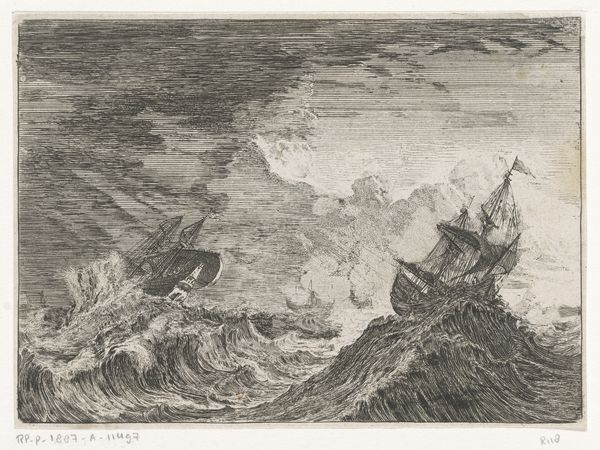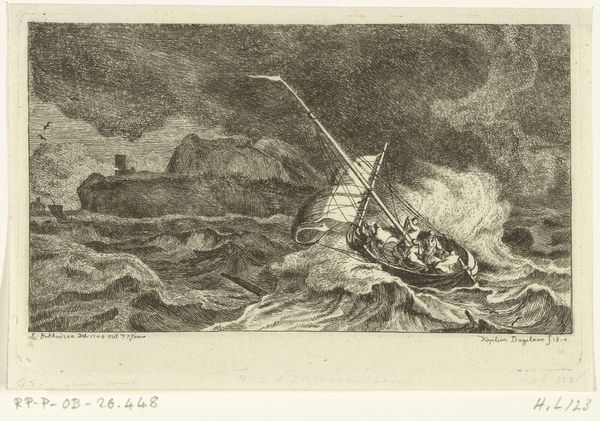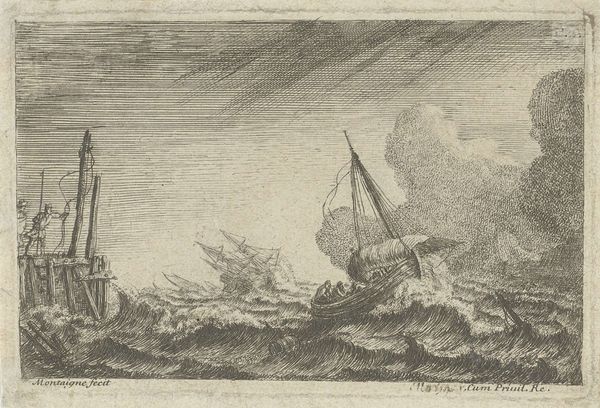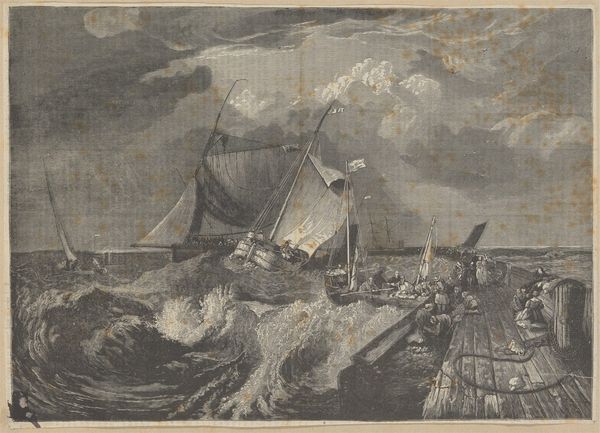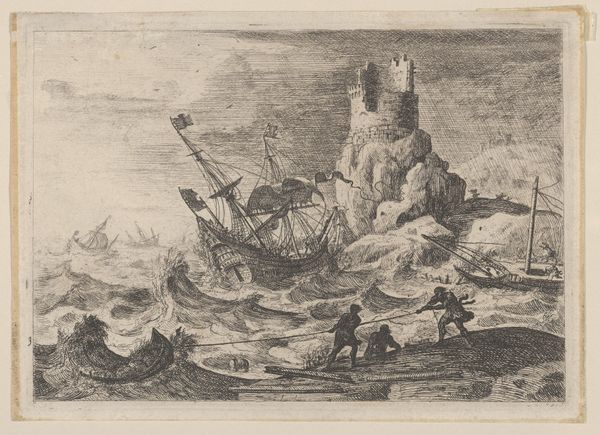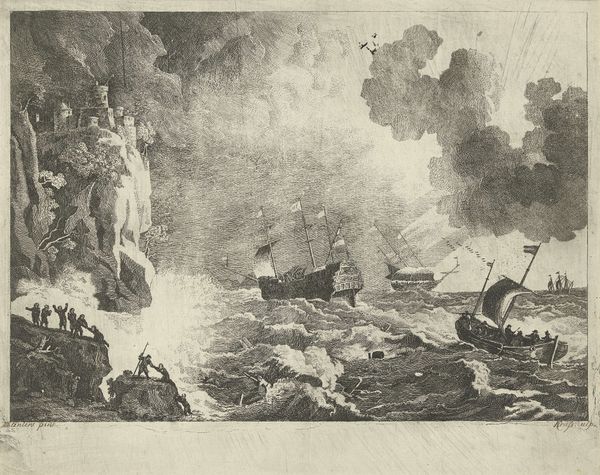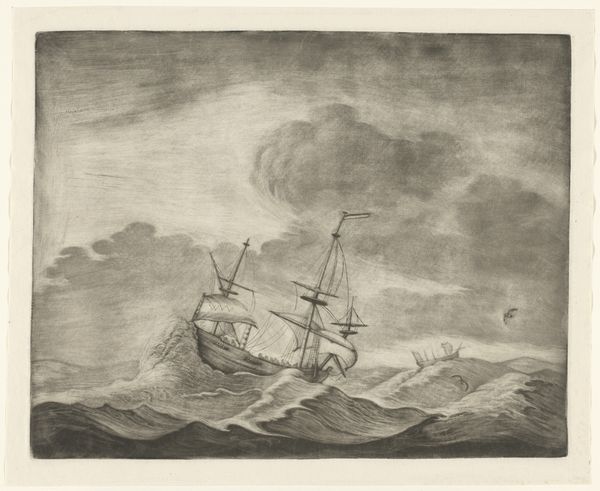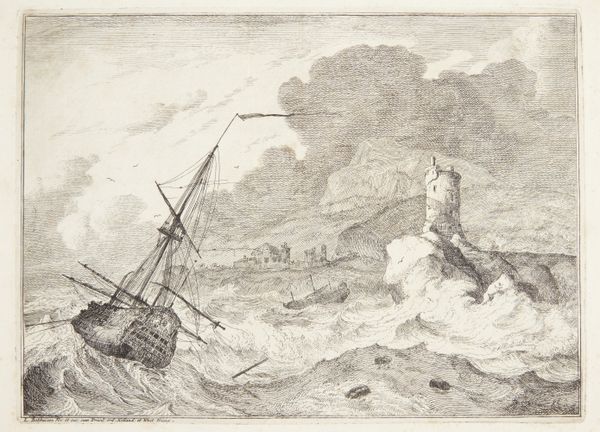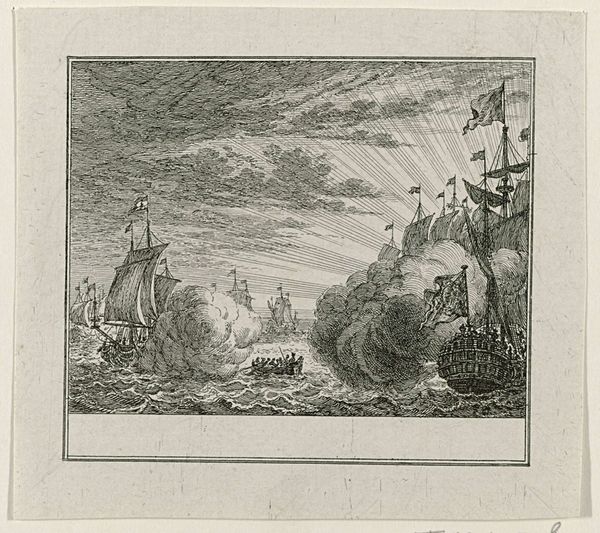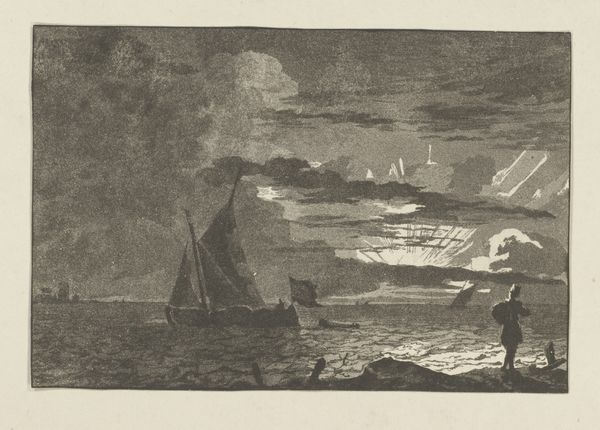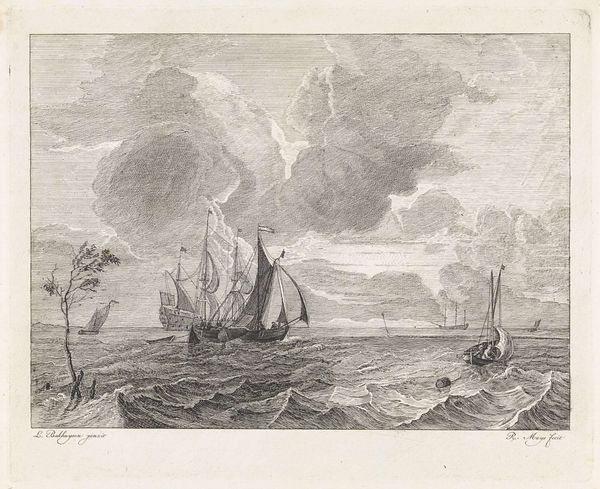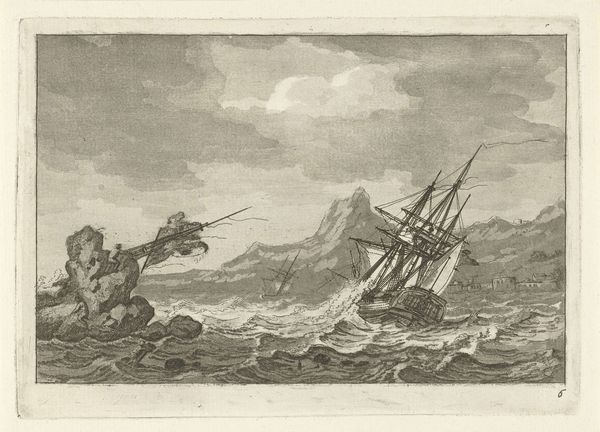
print, etching
#
narrative-art
#
baroque
# print
#
etching
#
landscape
#
cityscape
Dimensions: height 144 mm, width 233 mm
Copyright: Rijks Museum: Open Domain
Editor: Here we have Matthieu van Plattenberg’s etching, “Schipbreuk,” created sometime between 1617 and 1660. It depicts a tumultuous shipwreck, and the scene feels incredibly chaotic and almost biblical in its intensity. What strikes you most when you look at this piece? Curator: The symbol of the ship, especially one wrecked against the rocks, has long been a potent image, hasn’t it? It represents not just physical danger, but also the fragility of human endeavor against the overwhelming forces of nature, fate, or even divine wrath. Do you see how the jagged rocks echo the broken masts? It's a visual language of disaster, quite consciously deployed. Editor: That makes sense. I hadn't really thought about how the composition reinforces that feeling. Curator: Beyond the immediate drama, consider what the "ship" might stand for, culturally. In the 17th century, maritime trade was booming. For the Dutch Republic especially, ships *were* prosperity and power. So a shipwreck carries further resonance; perhaps something about the limits of ambition, or the precariousness of earthly fortunes? Even that sudden beam of light in the corner - is it hope, divine intervention, or simply cold, indifferent illumination of a catastrophe? Editor: So it’s not just a picture of a shipwreck, it's also commenting on larger societal themes. I will definitely need to spend more time interpreting the meaning of symbols! Curator: Indeed! It is a powerful skill which gets better over time and repetition. Editor: Thanks so much, this really opened my eyes to new ways of reading art. Curator: My pleasure. Symbolism adds an extra dimension of understanding to an artwork, a real layer of complexity to unpack.
Comments
No comments
Be the first to comment and join the conversation on the ultimate creative platform.
